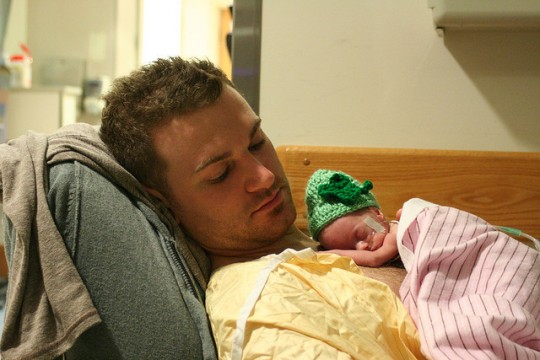
On the 23rd of April this year, I gave birth to my first child, a healthy little boy who arrived 4 days later than expected. By accident of my own birth, I was born in a country where I was afforded the best medical assistance that was available to me during the particularly difficult delivery of my son.
I had previously emphasised to his dad, should anything happen during the delivery, that he should be sure to do skin-to-skin contact with our baby to keep him safe and warm, to bond with him and to reassure him after he had just entered this strange, yet somehow familiar world.
Lots of parents do this for numerous reasons and last Wednesday marked the day of what might be one of the most important reasons of all.
November 17th is World Prematurity Day – a day to focus attention on the problem of premature birth. Globally, 15 million babies are born prematurely every year. It is the world’s largest cause of death in newborn babies.
A high number of these deaths are preventable using some very simple, low cost interventions; a key intervention being skin-to-skin contact with the baby, also called ‘kangaroo care’.
In countries where there is little to no access to incubators, parents can carry their newborns constantly against their skin to keep their body temperature up. This close contact helps to stabilise baby’s body temperature, steady their heartrates and help their breathing. They are also comforted by the familiarity of their parent’s voice and heartbeat.
Other interventions include steroid injections and antibiotics, which are relatively low costing also.
“Using an essential package of pregnancy, childbirth and postnatal care that includes these interventions will save more than three quarters of preterm babies without intensive care. Most of these infants can grow up healthy and without lifelong disabilities.”
– Carole Presern, Ph.D., head of The Partnership for Maternal, Newborn & Child Health (PMNCH) and a midwife.
My son’s story may have been quite different if he was born premature outside of Ireland, particularly in a low income country where more than 90% of extremely preterm babies (less than 28 weeks) born in die within the first few days of life.
UN days like World Prematurity Day are important. Babies born into high-income countries like Ireland would automatically have some of the best care in the world available to them where less than 10% of extremely preterm babies die. Yet low cost interventions are proven highly effective in delivering healthy outcomes for premature and small babies, as shown by UNICEF’s work:
“To end preventable child deaths by 2020, we must focus attention on preterm birth—the leading cause of death for children under age 5. There are 15 million babies born preterm each year – and over 1 million deaths of children under 5 years from related complications. The solutions to prevent and treat preterm birth complications are known and cost-effective.”
